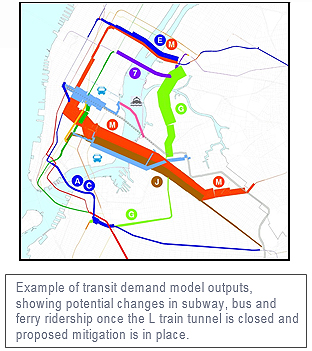Preliminary travel forecasts for the looming L train shutdown suggest the MTA and DOT are aiming too low with plans to provide bus service for affected transit riders, according to Walter Hook of BRT Planning International. The MTA's relatively meager projections for bus ridership during the shutdown, he says, don't reflect the passenger volumes one would expect from fast, reliable bus service operating on streets that fully prioritize transit.
About 225,000 passengers ride the L train across the East River each day, and another 50,000 ride it exclusively in Manhattan. Those passengers will need other options when service between Bedford Avenue and Eighth Avenue is shut down for 18 months, starting in January 2019.

The MTA expects the J, M, and G lines to absorb the lion's share of diverted passengers, saying bus service will be necessary to relieve subway crowding and serve 5 to 15 percent of riders who "are far from alternate subway stations."
But by framing buses as a response to limited subway capacity, the MTA is indicating that it expects those bus routes to be an option of last resort, says Hook, not an attractive, high-capacity service.
"If they offered an alternative service at a [bus rapid transit]-type speed, I think their modeling would show that that service would attract more than the five to fifteen percent that they’re projecting," he said. "I think that they’re assuming that those bus services are going to be operating at relatively slow speeds."
The effective bus service that Hook has in mind would include transit-only rights of way in North Brooklyn and Manhattan, all-door boarding, and level boarding. Without those features, not only will bus riders suffer from slow service, but the subway system could be overwhelmed by the crush of new passengers.
At the Hewes Street and Marcy Avenue stations, for instance, the MTA is expecting large numbers of additional riders, but Hook doubts the stations are equipped to handle them. "The train would have that capacity, but my suspicion is that the platforms and the approaches to those two stations can’t handle those volumes," he said.
And if the transit system is overwhelmed, traffic congestion will be compounded as more people turn to driving private cars and ride-hail services like Uber and Lyft, while other people will simply avoid making trips. "There will be some serious consequences unless they do something pretty bold," Hook said.






